In today’s fast-paced world, we are running a race where the finish line is blurred. We’re losing something precious along the way—our cultures, ancestral folktales, and the deep-rooted stories of our lands. That’s why I am gathering stories for ShivaTells. My mission? To uncover rare, untold stories and hidden gems of our country.
Today, let me take you to the breathtaking Kangra Valley in Himachal Pradesh—a paradise for nature lovers. With its majestic mountains, serene lakes, and ancient temples, Kangra Valley is not just a destination; it’s a living, breathing story waiting to be told. Let’s explore the top 10 must-visit places that make this valley so special.
So, grab your chai, sit back, and let’s dive into the beauty of Kangra Valley together.
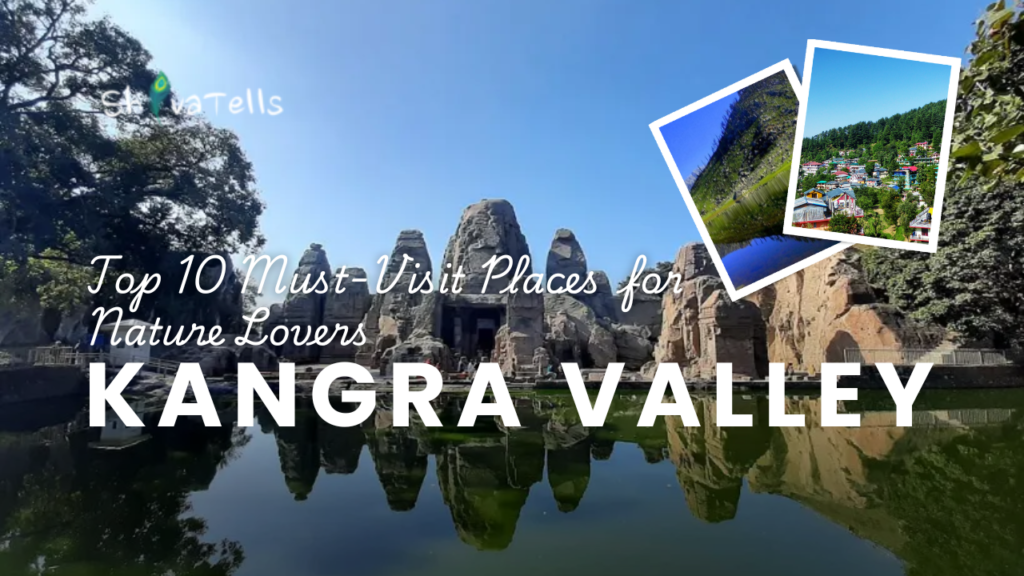
Table of Contents
1. Triund Trek: A Date with the Dhauladhar Range
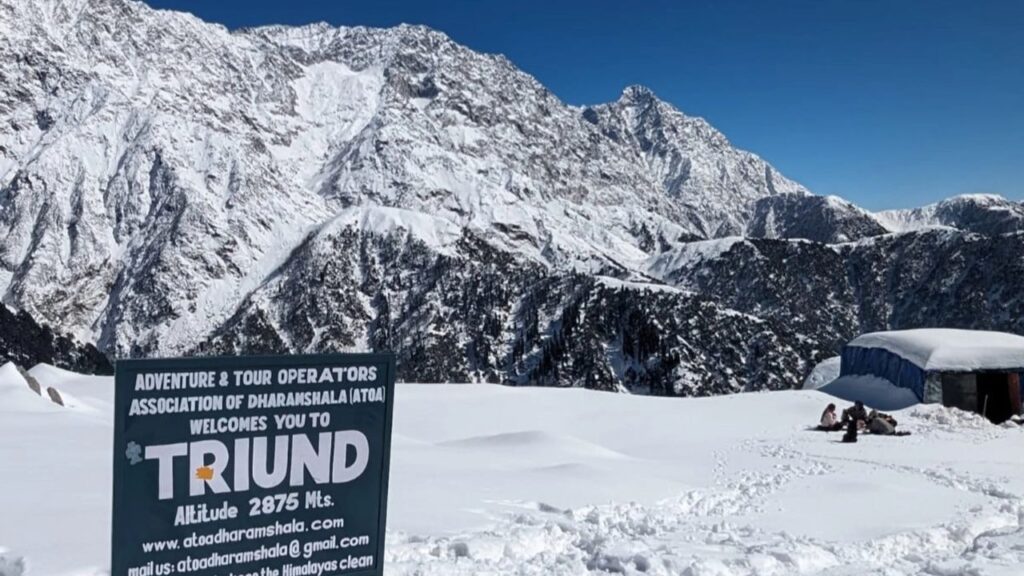
If there’s one trek that captures the essence of Himachal’s beauty, it’s the Triund Trek. Starting from McLeod Ganj or Dharamkot, this 9-kilometer trek takes you through dense oak and rhododendron forests. The trail is dotted with vibrant wildflowers, chirping birds, and views of Kangra Valley that will leave you spellbound.
As you ascend, the majestic Dhauladhar range comes into view. It’s like nature’s grand reveal! The real magic happens at the top. At Triund, you’ll find a vast meadow with panoramic views of snow-capped peaks. Watching the sun dip behind the mountains here is an experience like no other.
Stay overnight in one of the campsites—it’s worth braving the chilly winds. The night sky at Triund is something you’ll never forget. The stars are so bright and countless, you’ll feel like you’ve entered another galaxy.
Travel Tip: Start early in the morning to avoid crowds, especially during peak season. Carry enough water and snacks. Don’t forget warm clothing for the night, even in summer!
Triund isn’t just a trek; it’s a soul-stirring journey that connects you to nature’s raw beauty. Whether you’re an experienced trekker or a first-timer, this trail will stay etched in your heart.
2. Kareri Lake: A Hidden Jewel of Kangra Valley
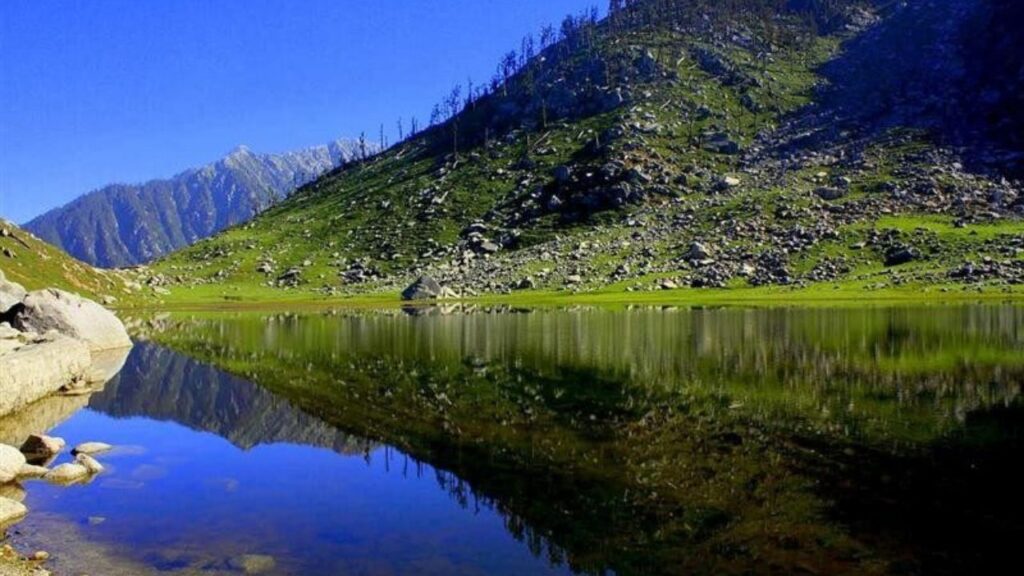
Tucked away at an altitude of over 2,900 meters, Kareri Lake is a serene and lesser-known destination in Kangra Valley. This glacial lake is formed by the melting snow of the Dhauladhar range, and its crystal-clear waters reflect the surrounding peaks like a mirror.
Reaching Kareri Lake requires a trek through dense forests, where you’ll encounter chirping birds, lush green meadows, and gurgling streams. The journey itself is as rewarding as the destination. The pine and oak forests feel like something out of a fairytale, and every step brings you closer to tranquility.
At the lake, you’ll find peace like nowhere else. The stillness of the water, the cool mountain breeze, and the complete absence of crowds make it a perfect spot for meditation or just soaking in the beauty. You might also spot shepherds grazing their flocks nearby, offering a glimpse into the simple mountain life.
Travel Tip: The trek is moderately challenging, so it’s ideal for those with a bit of trekking experience. Ensure you carry enough water, food, and a good pair of trekking shoes. Camping near the lake is an unforgettable experience, but remember to leave no trace and respect nature.
Kareri Lake isn’t just a destination; it’s a reward for those who seek solitude and natural beauty.
3. Kangra Fort: Where History Meets Nature
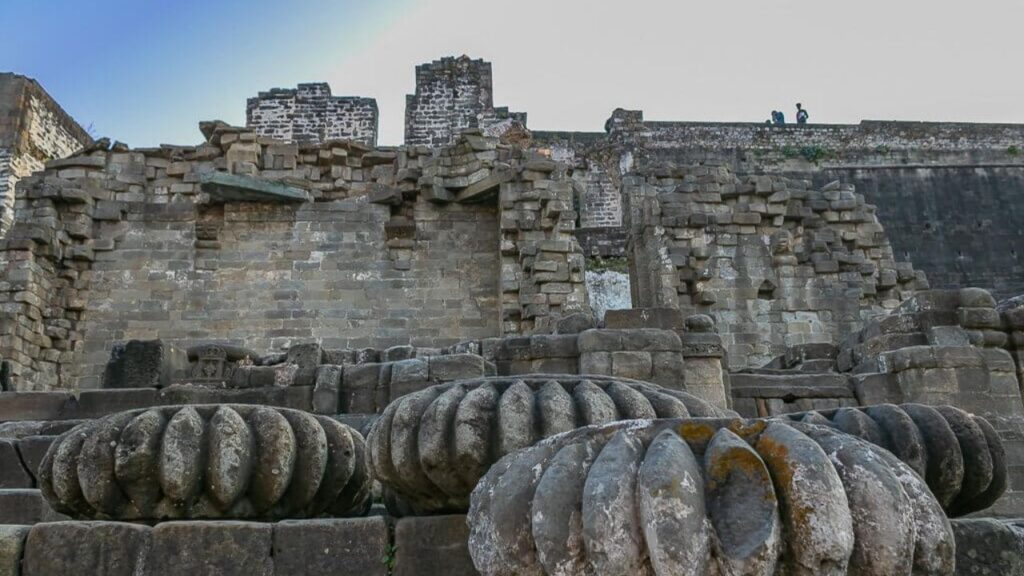
As you stand before the Kangra Fort, you can almost hear the whispers of history echoing through its ancient walls. Built by the Katoch dynasty, this fort is one of India’s oldest and largest. Perched on a hilltop, it overlooks the confluence of the Banganga and Majhi rivers, offering breathtaking views of the surrounding valley.
Walking through the fort’s gates is like stepping back in time. The intricate carvings, old temples, and strategically built watchtowers speak volumes about the craftsmanship of the past. The fort has withstood numerous invasions, from the Mughals to the British, each leaving their mark on its architecture.
One of the fort’s highlights is the Laxmi Narayan Temple, which features exquisite stone carvings. Don’t miss the Museum of Kangra Fort, where you can learn about the fort’s fascinating history and see relics from the past.
Nature lovers will also appreciate the fort’s setting. The views of the Dhauladhar range in the distance and the lush green valley below are simply mesmerizing.
Travel Tip: Visit early in the day to explore the fort at your own pace. Wear comfortable walking shoes, as there’s a lot to see.
Kangra Fort isn’t just a monument; it’s a storyteller. Its walls carry tales of glory, betrayal, and resilience that will leave you in awe.
4. Masroor Rock Cut Temples: India’s Hidden Ellora
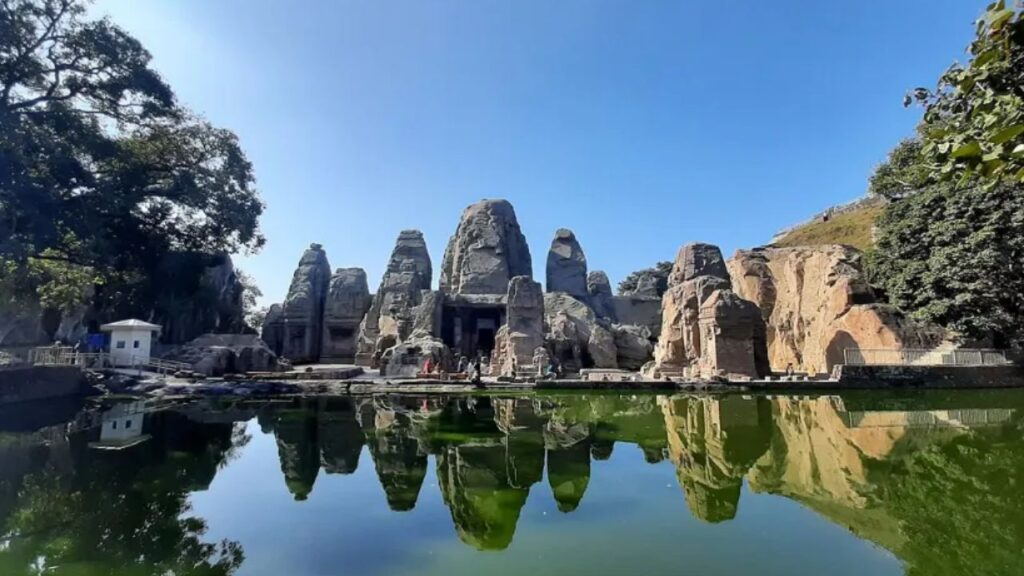
Nestled in the hills of Kangra Valley, the Masroor Rock Cut Temples are a hidden architectural marvel. Carved out of a single sandstone rock, these temples date back to the 8th century. Often referred to as the “Ellora of the North,” they are dedicated to Lord Shiva, Vishnu, and other Hindu deities.
The complex features 15 intricately carved temples, all facing a large rectangular water tank. The carvings depict various Hindu gods, goddesses, and mythological scenes, showcasing the artistic genius of ancient India. The symmetry and precision of the carvings are astonishing, especially considering the limited tools available at the time.
What makes this place even more special is its location. Surrounded by lush greenery and offering views of the Dhauladhar range, it’s a haven for photographers and history enthusiasts alike. The reflections of the temples in the water tank create a surreal visual, especially during sunrise and sunset.
Travel Tip: The site is best visited in the early morning or late afternoon for the best light for photography. Pack some snacks and water, as there aren’t many facilities nearby.
Masroor Rock Cut Temples are not just a testament to ancient craftsmanship; they’re a reminder of the rich cultural heritage that needs to be cherished and preserved.
5. Bir Billing: Soar Like a Bird
If there’s a place where your dreams of flying come true, it’s Bir Billing. Nestled in the Kangra Valley, this quaint village is world-famous for paragliding. It’s not just an adventure; it’s an experience of freedom, with the wind brushing against your face and a bird’s-eye view of the valley stretching below.
Bir is the take-off point, while Billing is the landing site, and together, they form one of the world’s top paragliding circuits. The flight lasts around 20-30 minutes, depending on wind conditions, and the views during the ride are nothing short of magical. As you glide, you’ll see lush green fields, winding rivers, and the majestic Dhauladhar range. It’s nature’s masterpiece laid out before your eyes.
But Bir Billing is more than just paragliding. Bir has a significant Tibetan influence, with monasteries like the Chokling Monastery and Tibetan markets where you can shop for handicrafts and indulge in local delicacies like momos and thukpa. Billing, on the other hand, is a peaceful haven perfect for nature walks and camping.
Travel Tip: The best time for paragliding is from March to June and October to November when the weather is clear. Book your paragliding slots in advance, as it’s a popular activity.
Whether you’re an adventure junkie or someone looking to tick off a bucket list item, Bir Billing will leave you with memories that last a lifetime.
6. Nalhota: A Hidden Paradise of Serenity
Nestled deep within the Kangra Valley lies Nalhota, a serene village that remains untouched by the chaos of urbanization. It’s one of those rare gems where time slows down, and nature greets you with open arms. If you’re seeking peace and a genuine connection with the Himalayan way of life, Nalhota is your calling.
The beauty of Nalhota lies in its simplicity. Surrounded by terraced fields, dense pine forests, and quaint mud houses, the village paints a picture of rural Himachal Pradesh at its best. Walking through the narrow pathways of Nalhota, you’ll often encounter warm smiles from the locals who are always eager to share their stories and a cup of chai.
For adventure lovers, the trails around Nalhota offer moderate treks leading to stunning viewpoints that overlook the Dhauladhar range. The Nalhota Waterfall, a hidden cascade amidst the forest, is a must-visit. The soothing sound of water and the pristine surroundings make it a perfect spot for meditation and relaxation.
The village is also known for its traditional Himachali cuisine. Don’t miss out on trying local delicacies like siddu and madra, often prepared using recipes passed down through generations.
Travel Tip: Stay in a local homestay to immerse yourself in the village culture. Early mornings are the best time to explore, as the mist slowly clears to reveal breathtaking views.
Nalhota is not just a place; it’s an experience of living in harmony with nature and embracing the simplicity of life. It’s the perfect end to your Kangra Valley adventure, leaving you with memories of a world that thrives on peace and authenticity.
7. Dharamkot: The Hippie Vibes of Kangra
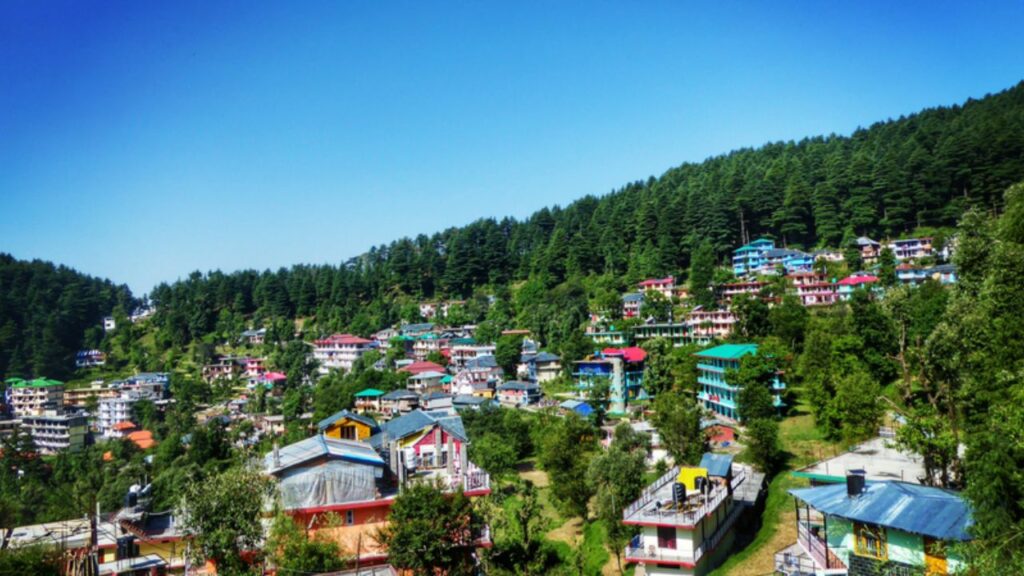
If there’s one place in Kangra Valley that feels like a perfect blend of tranquility and vibrant energy, it’s Dharamkot. Perched above McLeod Ganj, this small village is a favorite among backpackers, artists, and yoga enthusiasts.
Dharamkot’s charm lies in its simplicity. The village is dotted with rustic cafes serving everything from local Himachali food to global cuisines like Israeli falafel and Italian pizzas. Sitting in one of these cafes with a steaming cup of coffee, surrounded by lush greenery and mountain views, is an experience in itself.
The vibe here is laid-back yet creative. You’ll often see travelers meditating in yoga retreats, painting in the open, or playing music in small gatherings. Dharamkot is also the starting point for treks like the Triund and Kareri Lake treks, making it an ideal base for adventurers.
One of the must-visit spots here is the Tushita Meditation Centre, which offers courses in Buddhism and mindfulness. Even if you’re not attending a course, a walk around its serene campus can be soul-soothing.
Travel Tip: Stay in one of the homestays or eco-lodges for an authentic experience. Walk around the village to discover hidden viewpoints and meet locals who are always eager to share their stories.
Dharamkot is more than just a place; it’s a vibe that encourages you to slow down, connect with yourself, and embrace the beauty of life.
8. Palampur: Tea Gardens and Tranquility
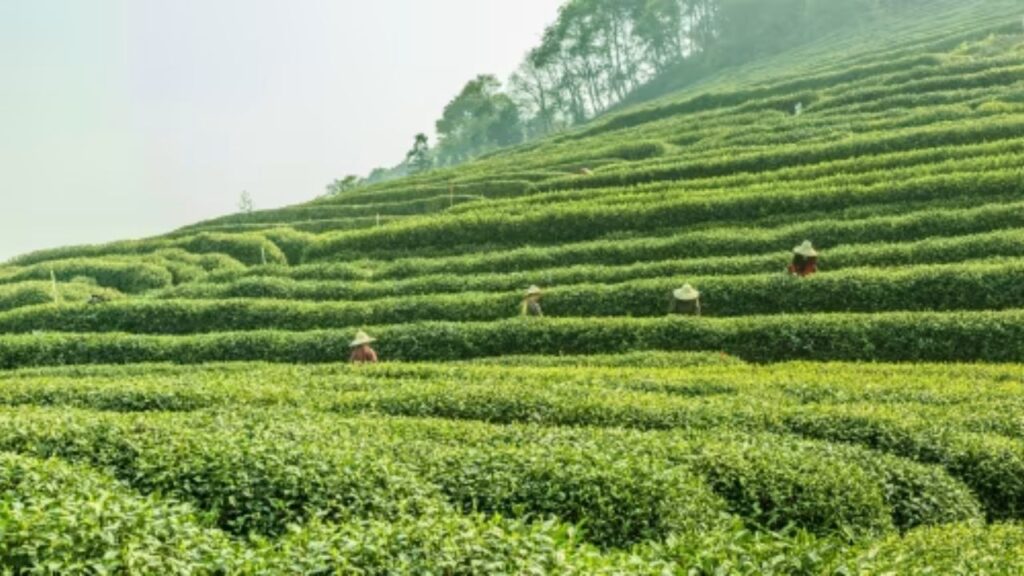
Imagine walking through lush green tea gardens with the snow-capped Dhauladhar range in the backdrop. That’s Palampur, the tea capital of northwest India. Known for its aromatic Kangra tea, this small town is a haven for nature lovers.
A visit to the Palampur Tea Gardens is a must. Here, you can watch the tea-picking process and even sip on freshly brewed tea. It’s a sensory delight that gives you a new appreciation for this daily beverage. The gardens are perfect for leisurely strolls, where the fresh mountain air and the scent of tea leaves rejuvenate your senses.
Palampur also boasts scenic spots like the Neugal Khad, a wide stream surrounded by verdant hills. It’s a great place for picnics or simply sitting by the water and soaking in the tranquility. Another must-visit is the Saurabh Van Vihar, a beautifully maintained park named after Captain Saurabh Kalia, a Kargil War hero.
Travel Tip: Visit the Andretta Artist Village, just a short drive away, to explore the vibrant art scene and pottery workshops. Stay in a tea estate for an immersive experience.
Palampur is not just a destination; it’s a retreat that soothes your soul with its natural beauty and peaceful vibes.
9. Norbulingka Institute: A Peek into Tibetan Culture
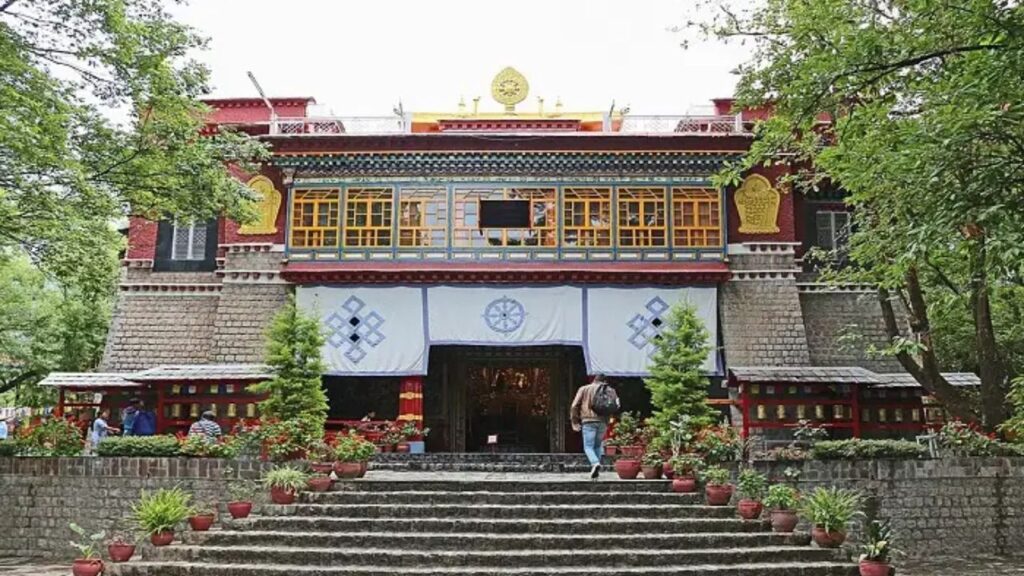
Nestled amidst the serene landscapes of Kangra Valley, the Norbulingka Institute is a living museum of Tibetan art and culture. Named after the Dalai Lama’s summer residence in Tibet, it was established to preserve and promote traditional Tibetan artistry.
The moment you step into Norbulingka, you’re greeted by meticulously landscaped gardens, koi ponds, and Tibetan prayer flags fluttering in the wind. It’s a sanctuary of peace and creativity. The institute offers guided tours where you can watch artisans at work—crafting thangka paintings, wood carvings, and metal sculptures. Each piece is a testament to the dedication and skill of these artists, who strive to keep their heritage alive.
One of the highlights here is the Deden Tsuglakhang Temple, adorned with vibrant murals and a stunning 14-foot statue of the Buddha. It’s a place where spirituality meets art, leaving you in awe of its beauty.
The institute also houses the Losel Doll Museum, which showcases miniature models dressed in traditional Tibetan attire, giving you a glimpse into the region’s diverse culture.
Travel Tip: Visit the café inside the institute for a cup of Tibetan butter tea and momos. Don’t forget to buy a handcrafted souvenir to support the artisans.
Norbulingka Institute isn’t just a place to visit; it’s a journey into a culture that values art, spirituality, and tradition.
10. Pong Dam Lake: A Bird Watcher’s Paradise

Tucked away in the serene landscape of Kangra Valley, the Pong Dam Lake is a hidden gem that’s perfect for nature lovers and bird watchers. Also known as Maharana Pratap Sagar, this reservoir is one of the largest man-made wetlands in northern India and a designated Ramsar site.
The lake is home to a rich diversity of flora and fauna. During the winter months, migratory birds from Siberia and Central Asia flock here, making it a bird-watcher’s paradise. You can spot bar-headed geese, ruddy shelducks, and even rare species like the black-necked crane. Don’t forget your binoculars for a closer look!
Apart from bird watching, Pong Dam Lake offers boating, fishing, and nature trails. The tranquil waters, surrounded by lush hills, create a picturesque setting perfect for photography or simply unwinding. Adventure enthusiasts can explore nearby villages for kayaking and camping experiences.
Travel Tip: Visit between November and March to witness the peak migratory bird season. If you’re lucky, you might catch a glimpse of a stunning sunrise or sunset reflecting off the lake’s calm waters.
Pong Dam Lake is more than just a destination; it’s a sanctuary of peace, where nature speaks to your soul and every moment feels timeless.
Why Kangra Valley Should Be on Your Bucket List
Kangra Valley isn’t just a destination; it’s a feeling. From towering peaks and serene lakes to temples steeped in history and vibrant Tibetan culture, this valley has something for every nature lover.
As I explored its corners, I felt a deep connection to the land and its stories. Let’s not let these treasures slip away into oblivion. Let’s protect, preserve, and celebrate them.
So, when are you packing your bags for Kangra Valley? Let me know in the comments, and don’t forget to follow ShivaTells for more travel stories. Together, let’s save our cultures!
